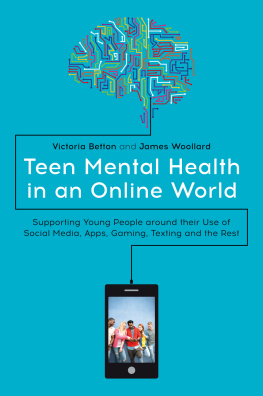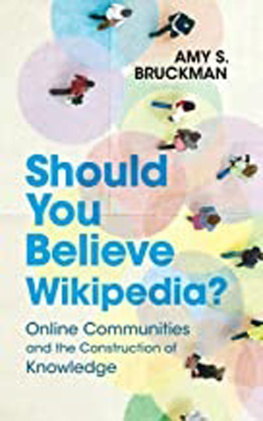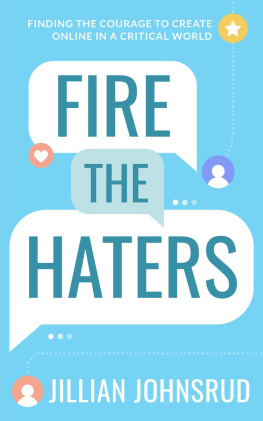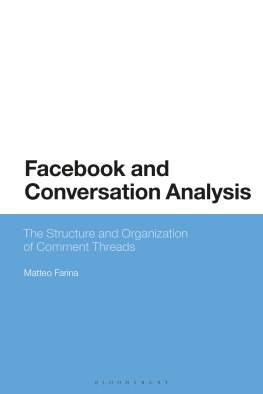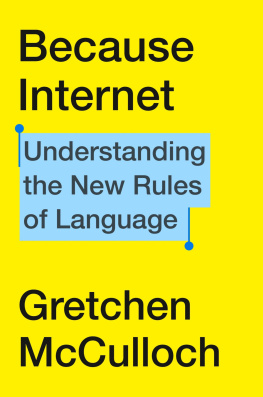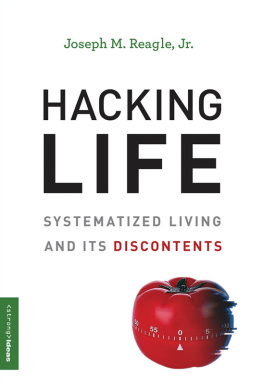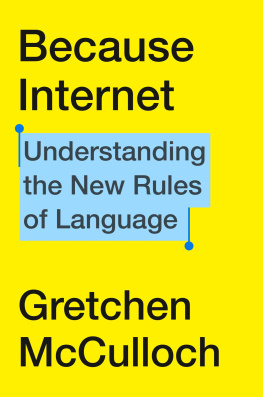Reading the Comments
Reading the Comments
Likers, Haters, and Manipulators at the Bottom of the Web
Joseph M. Reagle, Jr.
The MIT Press
Cambridge, Massachusetts
London, England
2015 Joseph Michael Reagle, Jr.
All rights reserved. No part of this book may be reproduced in any form by any electronic or mechanical means (including photocopying, recording, or information storage and retrieval) without permission in writing from the publisher.
Library of Congress Cataloging-in-Publication Data
Reagle, Joseph Michael.
Reading the comments : likers, haters, and manipulators at the bottom of the Web / Joseph M. Reagle, Jr.
p. cm.
Includes bibliographical references and index.
ISBN 978-0-262-02893-6 (hardcover : alk. paper)
ISBN 978-0-262-32888-3 (retail e-book)
1. Online chat groups. 2. Electronic discussion groups. 3. BlogsSocial aspects. 4. InternetSocial aspects. I. Title.
HM1169.R43 2015
302.2312dc23
2014034220
10 9 8 7 6 5 4 3 2 1
For my father, Joe Sr.
Contents
Acknowledgments
The sixteenth-century Frenchman Michel de Montaigne wrote that because there are few who can endure frank criticism without being stung by it, those who venture to criticize us perform a remarkable act of friendship. I thank those who were kind enough to send me constructive criticismwhat fan-fiction folks call concrit. Whatever merit this book about comments has is dependent on the comments of others. As I tell my students, Your writing can only be as good as the feedback you get. Of course, it is still the authors responsibility to realize that potential; I hope that I have done so and apologize for where I have fallen short.
I begin my acknowledgments with my colleagues at Northeastern University. Carole Bell, Gregory Goodale, Sarah Jackson, and Brooke Foucault Welles read and commented on one or more chapters. Thank you. Also, Fleura Bardhi gave me some pointers about rating systems, and Alan Zaremba referred me to Montaigne. Other scholars who were generous enough to comment on draft chapters include Thorsten Busch, Eric Goldman, Jeff Loveland, Kelly Page, Trevor Pinch, Andrea Weckerle, and David Weinberger. Devon Powers, a fellow New York University graduate, continues to impress: she read the whole manuscript over a couple of days and sent detailed feedback. The reviewers at the MIT Press were exemplary: they provided timely and productive suggestions to help me write the best book possible. Finding those reviewers is one of the many tasks that MIT Presss Margy Avery undertook on my behalf. Katie Persons reliably responded to my frequent emails. Deborah Cantor-Adams and Rosemary Winfield helped produce and polish the book.
Also, thank you to those who spoke with me about your experiences at the bottom of the Web, three of whom also made suggestions on the manuscript: Brianna Laugher, Foz Meadows, and Denise Paolucci. Four friends also contributed to this project, each in a different way. Melissa Ludtke and I regularly discussed our respective book projects over rosemary french fries. Greg Reagle helped me with the references; it was a delight to collaborate with a fellow geek and a brother. This is Nora Schaddelees second book with me, and she patiently acted as a sounding board, copy editor, and loving partner. And Casper kept me company through the long days of writing, reminding me when it was time to take a typing break.
Northeastern students are bright and online, and I benefited greatly from discussing this work-in-progress with them in the classroom. Many students were generous enough to do the extra work of sharing their suggestions with me, including Michelle Binus, Stephanie Chaloka, Kitty Cheung, Patrick Christman, Rose DeMaio, Tameka Geaslen, Mark Howitt, Christina LaPenna, Jennifer Lawlor, Adisa Reka, and Sarah Shaker. Anna Glina merits special thanks for reading and giving feedback on my work beyond the syllabus.
I also want to recognize a few institutions that are important to me. I was apprehensive when I first arrived at Northeasterns Department of Communication Studies but it now feels like home, in part because of our chairperson Dale Herbeck and the administrators Angela Chin and Lauren Gillin. I also have had the pleasure of being associated with the Berkman Center for Internet and Society as far back as 1998; it is a wonderful hub for fascinating conversation.
Finally, my thanks to John MacFarlane and the other contributors to the pandoc conversion tool. I write everything in Markdown (books, articles, slides, and email), and this is possible only because of all those who contribute to the text-editing ecosystem.
Comment: The Bottom Half of the Web
Theres a reason that comments are typically put on the bottom half of the Internet.
@AvoidComments (Shane Liesegang), Twitter
Am I ugly? This question has been asked on YouTube by dozens of young people, and hundreds of thousands of comments, ranging from supportive to insulting, have been left in response. The Web is perfect for this sort of thing, and it has been almost from the starteven if some think it alarming. Over a decade ago, some of the earliest popular exposure that the Web received was through photo-rating sites like HOTorNOT. Am I Ugly? videos continue this phenomenon and remain true to YouTubes origins. YouTube was conceived, in part, as a video version of HOTorNOT. YouTube cofounder Jawed Karim was impressed with the site because it was the first time that someone had designed a Website where anyone could upload content that everyone else could view. But not only could people upload content: others could comment on that sophomoric content. And if the word sophomoric seems haughty, Mark Zuckerberg was a Harvard sophomore when he first launched Facemash, his hot-or-not site that used purloined student photos from dormitory directories, what Harvard calls facebooks.
This uploading and evaluating of content by users is now associated with various theories and buzzwords. (I return to the question of others physical attractiveness in a later chapter.) Social media, like YouTube, are populated by user-generated content. Facebook is an example of Web 2.0 in that it harnesses the power of human networks. The online activity of masses of ordinary people might display the wisdom of the crowd or collective intelligence. Books on these topics claim that this changes everything and is transforming the Internet, markets, freedom, and the world. Yet I continue to be intrigued by what is happening in the marginsthe seemingly modest comment. But what is comment?
As I use the term, comment is a genre of communication. In 2010, for instance, YouTube lifted its fifteen-minute limit on videos, and since then, there has been a flurry of ten-hour compilations of geeky, catchy, and annoying audio. Under a hypnotic video of Darth Vader breathing, someone commented: What am I doing with my life?! 10 hours of breathing! From this we can see that comment is communication, it is social, it is meant to be seen by others, and it is reactive: it follows or is in response to something and appears below a post on a blog, a book description on Amazon, or a video on YouTube. Although comment is reactive, it is not always responsive or substantively engaging. Many comments on social news sites are prefaced with the acronym tl;dr (too long; didnt read), meaning that the commenter is reacting to a headline or blurb without having read the article. Comment is shortoften as simple as the click of a button, sometimes measured in characters, but rarely more than a handful of paragraphs. And it is asynchronous, meaning that it can be made within seconds, hours, or even days of its provocation. Putting aside future transformations, comment is already present: comment has a long history (some of which I discuss briefly), and it is pervasive. Our world is permeated by comment, and we are the source of its judgment and the object of its scrutiny. There is little novelty in the form of comment itself, but its contemporary ubiquity makes it worthy of careful consideration, especially given online comments tarnished reputation as something best avoided.
Next page

